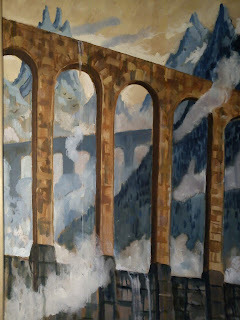A text in Swedish, presenting this book. -- Min senaste bok heter Commanders -- American Generals from Lee to Schwarzkopf. Du kan köpa den på Adlibris. Eller på Bokus.
Amerika. USA. Detaljer åsido, ett land med en historia där det hänt en del.
Men man måste vara skeptisk...! Som jag till exempel. Som jag säger i förordet till Commanders -- American Generals from Lee to Schwarzkopf, så tvivlar jag på den officiella versionen av Gulfkriget. Och AVK.
Men med det sagt så innebar ju dessa och tidigare, amerikanska krig också en del intressanta episoder. Och personer. Och dem berättar jag om. I Commanders -- American Generals from Lee to Schwarzkopf.
I Commanders får ni läsa om amerikanska generaler från Robert E. Lee till H. Norman Schwarzkopf. Ni får läsa om inbördeskriget, FVK, AVK, Koreakriget, Vietnamkriget och Gulfkriget. Och stilen är obeskrivligt min: en mix av anekdoter, taktik, vapenkalibrar och kulturhistoria.
En läsbar bok, förhoppningsvis. Det är iaf ingen akademisk avhandling. Det är populärhistoria för den bildade mannen på gatan.
- - -
De generaler som porträtteras är till exempel Lee, "Stonewall" Jackson, Grant, Custer, Pershing, Patton, MacArthur, Eisenhower, Yeager och Claire Lee Chennault. Den sistnämnde var chefen för Flygande tigrarna i Kina.
Lägg till detta kapitel om Korea- och Vietnamkrigen. Samt en titt på amerikanska krig i film och litteratur. Och du har ett fynd på 177 sidor.
En del kapitel har tidigare publicerats på bloggen, på svenska. På vägen till bokmanus har texterna reviderats en del. Och översatts; boken är som sagt på engelska, glöm ej det...!
Iaf, dessa är de figurer i boken som tidigare porträtterats här på bloggen:
U. S. Grant
Dwight D. Eisenhower
Charles "Chuck" Yeager
Det om detta. Boken påbörjades i mitten av 90-talet. Jag råkade då läsa en rad amerikanska generalsbografier. Och sedan kom tanken att göra en bok av det hela. Genom åren har texten slipats till, kortats ner och nu nått kommersiell nivå. Döm själv. Enligt dessa röster torde jag ha mitt värde som författare på engelska:
“A biography of the very highest caliber.” (Living Traditions Magazine om Ernst Jünger – A Portrait, 2014). -- “With a title like Science Fiction from the Right, one can consider this an automatic purchase for anyone on the Alt Right.” (Counter-Currents om Science Fiction Seen from the Right, 2016). -- “A wonderful read! It opens many doors.” (Amazon kundrecension av Actionism – How to Become a Responsible Man, 2017).
Köp boken på Adlibris.
Köp boken på Bokus.
Relaterat
Trotylstorm i öster
U. S. Grant
Dwight D. Eisenhower
Charles "Chuck" Yeager



























